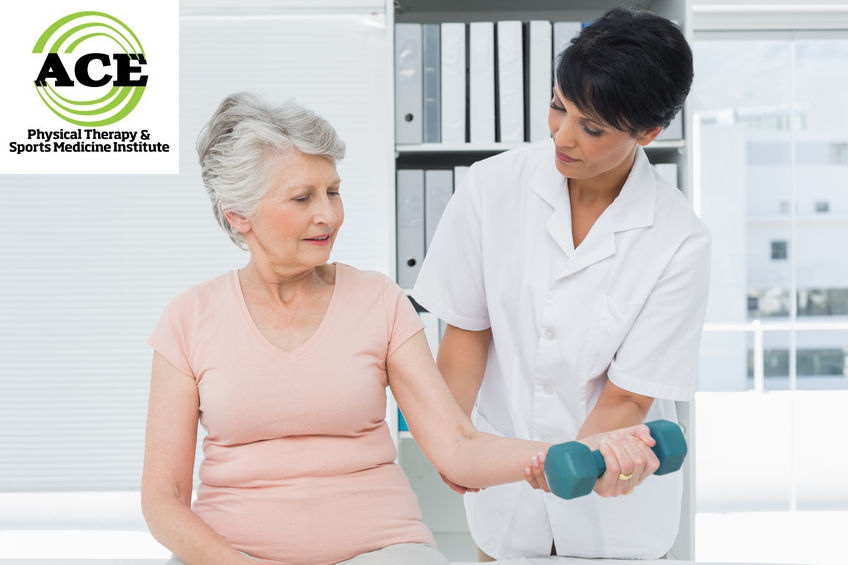DIET AND OSTEOPOROSIS

Tid Bits of Info
- Osteoporosis affects more than 200 million women worldwide.
- It is predicted that osteoporosis will increase more than 300% in men by the year 2050.
- Denial, lack of dialogue with a doctor and reduced access to diagnosis are the main reasons that osteoporosis is not controlled more effectively.
- Physical inactivity, poor diet, and a sedentary lifestyle can lead to the onset of osteoporosis.
- Seek the advice and treatment of a Physical Therapist if you suspect that you are at risk of developing osteoporosis
Osteoporosis impacts over 200 million women each year, and it is dramatically increasing in men as well. Healthy eating habits and proper exercise can play a crucial role in preventing or slowing down the impact of this degenerative condition. Defined as “low bone mass with architectural deterioration of bone tissue,” osteoporosis leads to weakened, fragile bones that are susceptible to injury. While it can affect anyone, postmenopausal women are the largest group that suffers from the effects of this disease. Physical Therapists are specially trained to develop programs for resisting Osteoporosis.
Women over the age of 50 are most susceptible, but osteoporosis has been on the rise in men as well. Men over the age of 50 are most affected by the disease. Hip fractures that occur in men have a higher mortality rate than in women, and in many instances, the cause of the fracture is due to weakened and brittle bones.

Osteoporosis has many causes. Genetics, sex, body frame size, age, and race all play a role to its onset. Osteoporosis does not have many significant “early” warning signs or symptoms. Many times someone develops back pain or experiences a fracture or fractures from a seemingly innocent event. Upon X-ray evaluation, the healthcare providers determines that the bones are weakened and less dense. Bone density testing is performed to confirm the diagnosis. Other common symptoms that lead to a suspicion of osteoporosis is the gradual loss of height and/or a stooped posture.
Recent studies examined the effects of one particular diet on the onset of this disease: The Mediterranean Diet. It emphasizes the consumption of vegetables, fruits, nuts, seeds, legumes, potatoes, whole grains, breads, herbs, spices, fish, seafood and extra virgin olive oil. Eat in moderation: Poultry, eggs, cheese and yogurt. The Mediterranean Diet has been shown to help reduce the frequency and onset of diseases such as cardiovascular disease, diabetes, Parkinson’s and Alzheimer’s. Recent studies link this diet to a reduction in osteoporosis and bone loss in the hip. This is extremely important because nearly 75% of all hip fractures occur in women. The femoral neck of the femur is the most common site of a fracture and the diet was shown to reduce the bone loss in this area. The overall bone mass density was not significantly different throughout the body, but the femoral neck did not lose as much density in the test group compared to the control group over a 1 year period of time.
Treating osteoporosis will usually include the use of prescribed medicines that are designed to help eliminate the loss of calcium from the bone. The use of resistance training and mild plyometric training has been studied and deemed useful as part of the treatment for prevention of osteoporosis. The use of weight training along with weight bearing plyometric exercises (jumping) that is performed a minimum of 3 times per week has been shown to increase the bone mass. The bone mass throughout the entire skeleton increased in bone mass after 3 months of aggressive resistance training. The American College of Sports Medicine and the National Strength and Conditioning Association are strong proponents of resistive and jump training in the “senior” population. They promote using heavier weight and a low level “bounding” program to prevent the onset and progression of osteoporosis.
Physical Therapists are capable of designing an exercise routine for this patient population. They are licensed professionals that are well educated in the design and implementation of a sound resistance program. The jumping will not involve jumping off or onto anything but will have the patient do a routine that would mimic someone jumping rope.
Osteoporosis can affect anyone but post-menopausal women are the most susceptible population. The use of the Mediterranean Diet has been shown to slow down the loss of bone mass in certain body parts that are most commonly affected by the disease. Taking preventative measures and utilizing proper treatment protocols if osteoporosis develops can enhance someone’s quality of life.
























